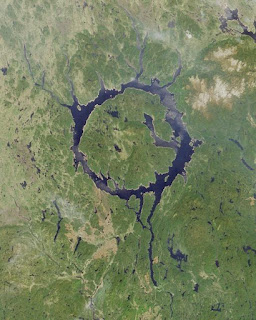The Yucatán Peninsula is a limestone plain, with no rivers or streams. The region is pockmarked with natural sinkholes, called cenotes, which expose the water table to the surface. One of the most impressive of these is the Cenote Sagrado, which is 60 metres (200 ft) in diameter[54] and surrounded by sheer cliffs that drop to the water table some 27 metres (89 ft) below.
M


Buried under a thick layer of sediment, it was not discovered until 1991.
Subsequent drilling within the crater, found a large amount of oil and gas.
It is one of the largest of six meteor craters associated with oil-producing formations in the States.
r










No comments:
Post a Comment